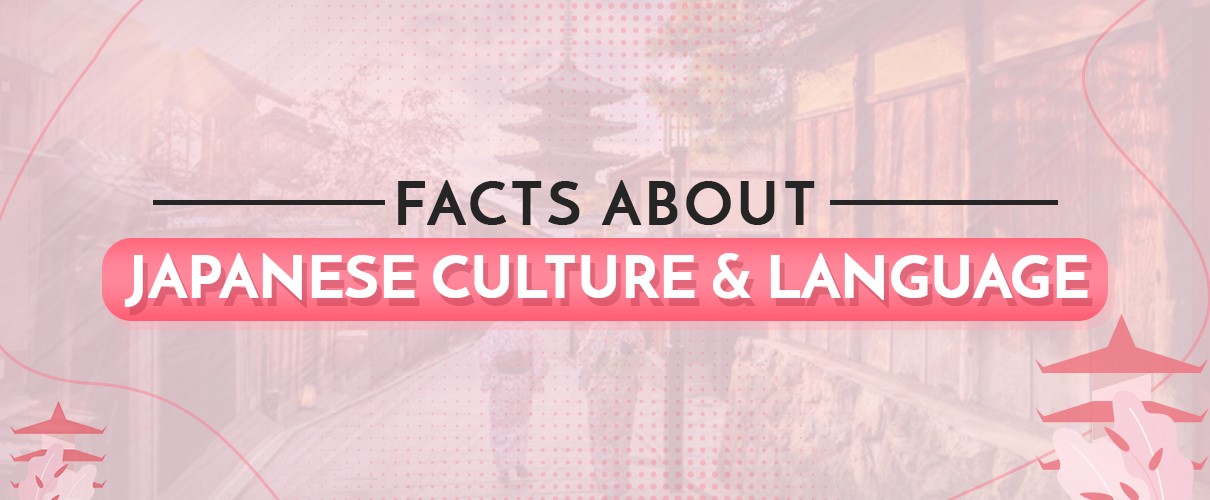
The secret of Japan being famous worldwide lies in its cultural heritage, language, and high-tech gadgets. As an island nation with an extensive history, Japanese culture has hugely intrigued Western and Eastern countries.
Japanese culture is so fascinating and unique. What makes it different is the blend of its rich history and modern-day tradition. It is more than just anime, sushi, and ramen noodles. Japan is a country of art, ethics, festivals, celebrations, and healthy eating.
Let us cover the amazing facts about Japanese culture and language today in this blog.
Japanese cooking is known as ‘washoku,’ which is based on the rule of the 5 flavors (sweet, sour, spicy, bitter, and salty). The rule of 5 is then combined with an emphasis on utilizing an extremely wide variety of food colors and cooking methods to create a full-course meal. This full-course meal, often referred to as “teishoku”, consists of a soup, collection of small vegetable side dishes, bowl of rice, and a main dish being some variation of protein such as fish or meat. When making Japanese food, or “washoku”, it is crucial to make the food both delicious and beautiful with a wide variety of different flavors, textures, and colors. On top of all this, it is also very healthy. Take an example of a Bento box – one of the specialties of Japanese cuisine. A bento box can actually consist of meat, rice, vegetables, fruits, seafood, or whatever you want for your lunch, making it very flexible, tasty, and healthy.
Traditional style clothing such as the Kimono is one of the many things that sets Japan apart from other cultures. Many locals enjoy wearing colorful and vibrant kimonos with floral designs, especially on special occasions like festivals, weddings, graduation, etc.
The Japanese language is different in many ways. They use three writing systems called Hiragana, Katakana, and Chinese characters referred to as ‘Kanji’. Then, there are honorifics such as “San” (さん, used between equals of any age), “Sama” (様 (さま), formal honorific used for gods, guests, or customers), and other different forms of honorific speech depending on the context. Politeness is a significant part of Japanese culture, and is the essence of the Japanese language. There are three different levels of politeness in the language, i.e., “Keigo” (敬語 (けいご), highly formal), “Teinego” (丁寧語(ていねいご), formal), and “Kudaketa” Nihongo (くだけた, informal). The level of courtesy is determined by the person’s rank or how familiar you are with them. If you are willing to learn the Japanese language, you can apply for a private language course.
Shinto is the indigenous religion of Japan, and we are sure in many movies or anime you have encountered Shinto shrines. While most natives would negate being religious, Shinto traditions and festivals play a significant role in everyday life. In Kyoto alone, there are 400 Shinto shrines dedicated to various “kami-sama”, or deities (神様 (かみ・さま) ).
The existence of vending machines in Japan is impossible to ignore. They are installed in nearly every block in Tokyo - the alleyways, schools, convenience stores, etc. At somewhat over 5 million nationwide, Japan has the highest density of vending machines globally, making the vending machine a big part of modern Japanese culture. You can find almost everything in these high-tech vending machines, from tea, cigarettes, soups, beer, hot food to undergarments.
If we said that Japan is the land of a thousand conveniences, then it wouldn’t be wrong. Heated toilets that give you a cleaning bidet, dry the user with warm air, and automatically flush when the lid is closed down cannot be found anywhere but in Japan. At the start, people feel that they are hard to use because of the many buttons. However, once they get used to these high-tech toilets, they are hooked on them.
Japan is also known worldwide for its cherry blossom festivals called “Hanami”, which literally means “viewing of the flowers”. The cherry blossom festival is a central custom that takes place all around Japan during the spring. However, from year to year, the dates vary as determined by cherry blossom forecasts. People of Japan celebrate this festival by going on picnics, eating, and drinking under the cherry blossom trees.
In A Nutshell, Japan is a very up-to-date and fast-paced country, yet it keeps many ancient traditions alive. If you are interested in learning more about Japanese culture and traditions, you may take this Japanese culture course offered by Oku Sensei’s Japanese